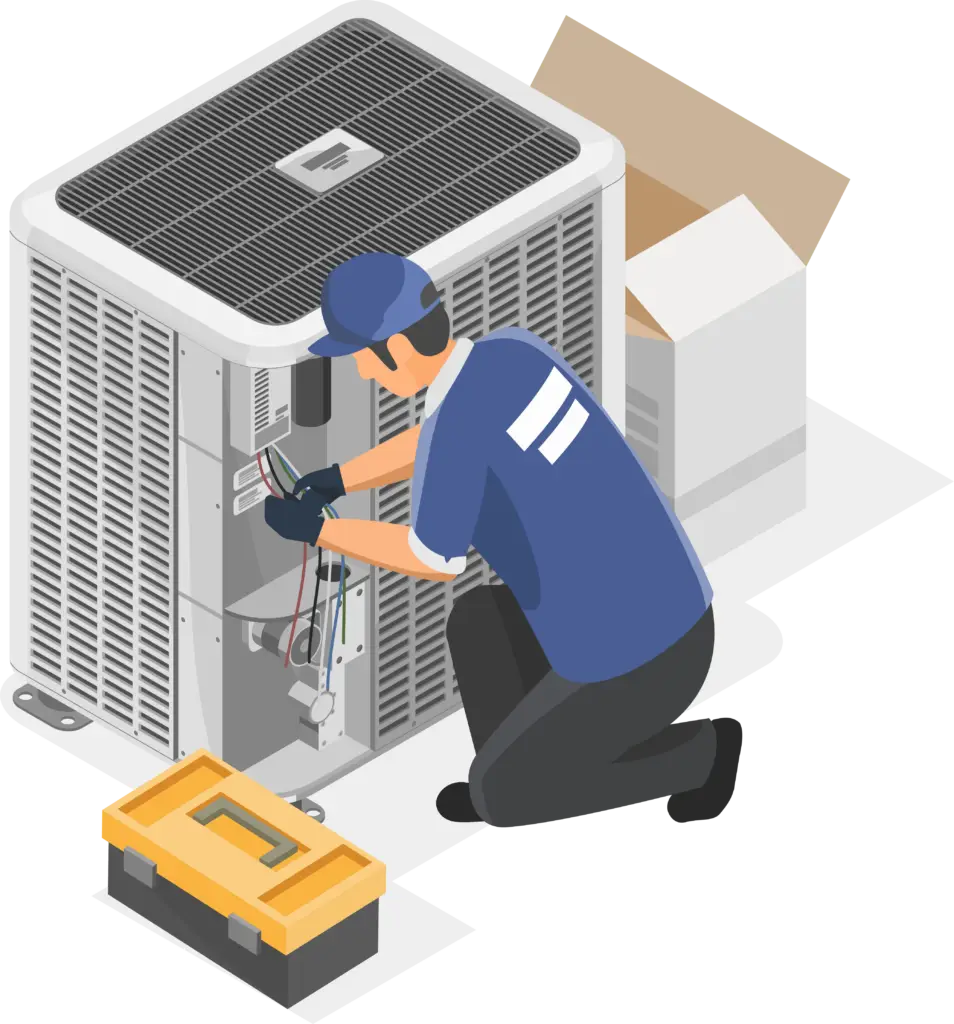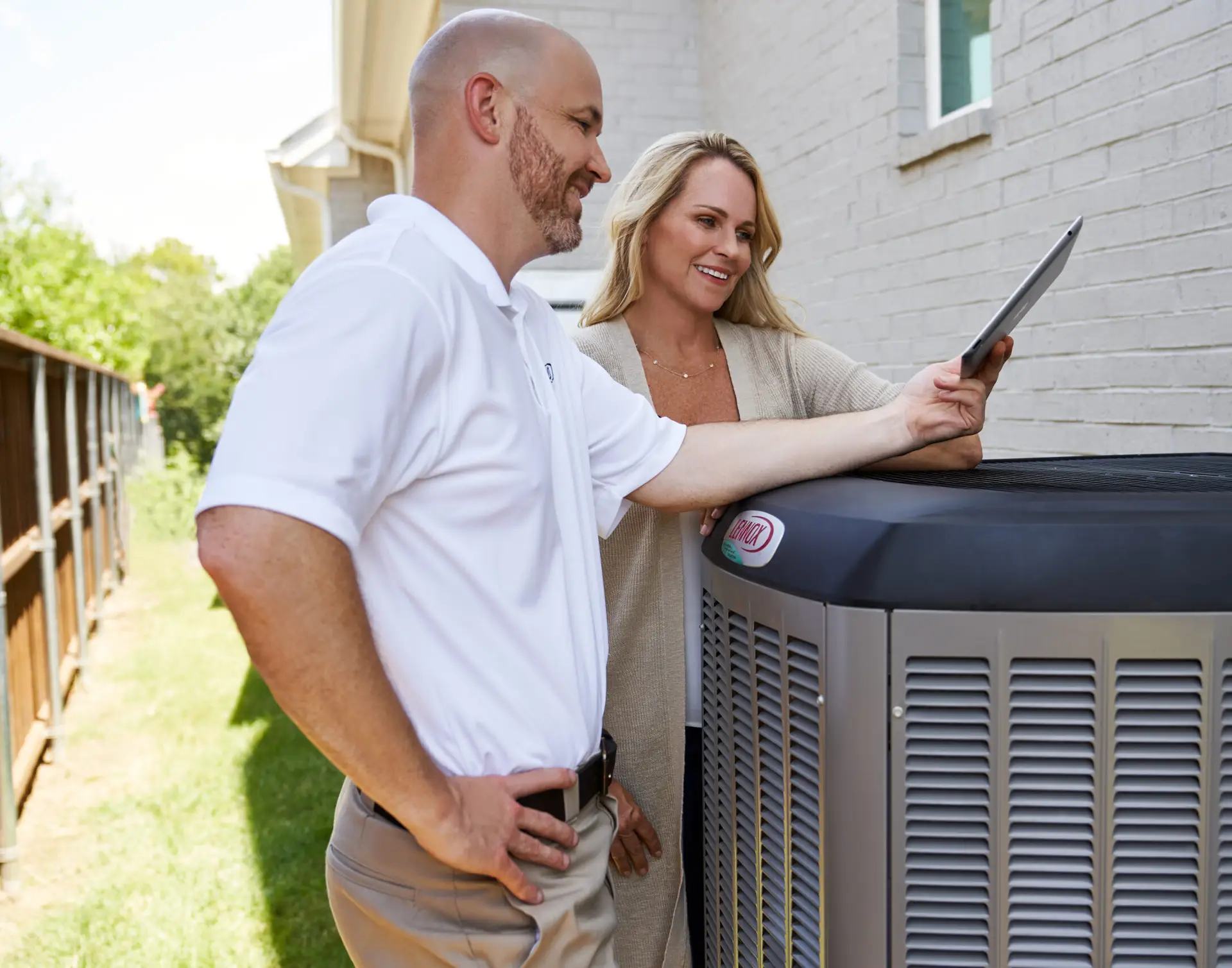The landscape of home comfort is undergoing a significant transformation, with the impending phase-out of R-410A refrigerant.
This shift, driven by environmental concerns, will impact homeowners nationwide.
As a homeowner, understanding these changes is vital for maintaining a comfortable and efficient home.
We at Rhoads Air are committed to keeping you informed and assisting you through this transition.
Understanding R-410A Refrigerant
To grasp the significance of this phase-out, we must first understand what R-410A refrigerant is.
What is R-410A?
R-410A has been the standard refrigerant in many HVAC systems, including air conditioners and heat pumps, it’s integral to the cooling process.
How R-410A has Been Used
R-410A is and has been used in a wide variety of residential and light commercial HVAC systems. Operates at higher pressures than previous refrigerants.
Why was R-410A Initially Adopted
It was introduced as a more environmentally friendly alternative to earlier refrigerants like R-22, sometimes better known as “freon”. It originally offered improved efficiency and performance compared to its predecessors, but as time continued improvements to HVAC efficiency and performance as well as concerns about environmental impacts the EPA decided to phase out R-410A.
The Environmental Impact and Phase-Out
The primary driver behind the EPA’s decision of the R-410A phase-out was its contribution to global warming.
R-410A’s Contribution to Global Warming
R-410A possesses a high Global Warming Potential (GWP), which can potentially trap heat within the Earth’s atmosphere.
This heat-trapping effect directly contributes to the greenhouse effect, which leads to a gradual increase in global temperatures and, ultimately, climate change.
To better understand this, consider the concept of GWP itself.
Explanation of Global Warming Potential (GWP)
It’s a metric that quantifies how much heat a particular greenhouse gas traps compared to carbon dioxide, the baseline for these measurements.
R-410A exhibits a considerably higher GWP than the next-generation refrigerants that are set to replace it.
This stark difference underscores the urgency of transitioning away from R-410A.
EPA Regulations and the 2025 Deadline
In response to this pressing environmental concern, the Environmental Protection Agency (EPA) has enacted regulations aimed at curbing the use of high-GWP substances.
A key component of these regulations is the deadline of January 1, 2025, by which manufacturers must shift to refrigerants with a GWP of 700 or less.
Why is the EPA Making These Changes
This regulatory move is not arbitrary; it’s a strategic effort to mitigate the environmental impact of HVAC systems on a broader scale.
The EPA’s decision is also rooted in a commitment to align with international agreements that seek to reduce greenhouse gas emissions and combat climate change.
By phasing out R-410A, the EPA is taking a decisive step toward a more sustainable future for residential and commercial cooling.
The Replacements: R-32 and R-454B
As the HVAC industry prepares for the R-410A phase-out, the focus has shifted to the adoption of more environmentally friendly refrigerants, notably R-32 and R-454B
R-32
R-32, in particular, has emerged as a promising alternative, boasting several key advantages. One of its most compelling attributes is its higher energy efficiency, which translates to reduced energy consumption and lower utility bills for homeowners.
Furthermore, R-32 has a significantly lower GWP compared to R-410A, making it a more climate-friendly choice. Its improved reliability also contributes to enhanced system performance and longevity.
R-32 is particularly well-suited for ductless systems, such as mini-splits, which are gaining popularity for their versatility and efficiency.
R-454B
On the other hand, R-454B is designed to excel in traditional ducted systems, offering an excellent balance of performance and environmental impact.
It also has a lower GWP than R-410A and provides a good balance of efficiency and environmental impact.
This refrigerant is engineered to work seamlessly with existing ducted infrastructure, making it a practical choice for homeowners who prefer traditional central air conditioning.
The transition to these next-generation refrigerants, R-32 and R-454B, represents a significant leap forward in reducing the overall environmental footprint of HVAC systems.
The adoption of these refrigerants will play a crucial role in minimizing the impact of home cooling on the planet while maintaining the comfort and convenience that homeowners have come to expect.
Identifying Your HVAC System’s Refrigerant
Knowing your system’s refrigerant type is crucial for planning maintenance and future upgrades.
How to Check Your HVAC System
Check the documentation that came with your HVAC system. Look for a sticker or plate on the outdoor unit that lists the refrigerant type. If you’re unsure, a certified HVAC technician can identify the refrigerant.
Importance of Knowing Your HVAC’s Refrigerant Type
Helps determine appropriate maintenance and repair procedures. Essential for planning future system replacements or upgrades.
Proactive Steps for Homeowners
Taking proactive steps is the best way to prepare for the R-410A phase-out.
Schedule a Routine Inspection
Scheduling routine inspection of your HVAC system ensures optimal system efficiency and extends the overall lifespan of your HVAC system all the while providing peace of mind, knowing your system won’t break at the most inopportune time.
For New Customers
For those new to our services, or those concerned about the state of their older HVAC systems, this phase-out presents a critical opportunity to evaluate and plan for future upgrades.
It’s understandable to have questions or concerns about how these changes will affect your home’s comfort.
By understanding the current state of your system, you can make informed decisions about necessary repairs, maintenance, or potential upgrades.
This proactive approach helps to avoid unexpected costs and ensures that your home remains comfortable year-round.
Don’t wait until the last minute!
Consider Future Upgrade Plans
Now is an ideal time to research new HVAC systems that utilize the more environmentally friendly refrigerants, R-32 and R-454B.
These systems are not only better for the planet but also offer significant improvements in energy efficiency.
Investing in a new, energy-efficient HVAC system can lead to substantial long-term cost savings on your utility bills.
Additionally, modern systems often come with advanced features that enhance comfort and convenience.
By planning your upgrades now, you can take advantage of current incentives and avoid the potential rush and price increases that may occur closer to the phase-out deadline.
Take the time to explore your options and make a smart investment in your home’s future comfort and efficiency.
Conclusion
The R-410A phase-out is a significant change driven by environmental responsibility.
By understanding the reasons behind this transition and taking proactive steps, homeowners can ensure their systems remain efficient and compliant.
At Rhoads Air, we’re committed to providing expert HVAC services and helping you navigate these changes with confidence.
Schedule your inspection or appointment today and experience the difference between proactive maintenance.
Remember, proactive maintenance saves money and protects your home’s comfort.



